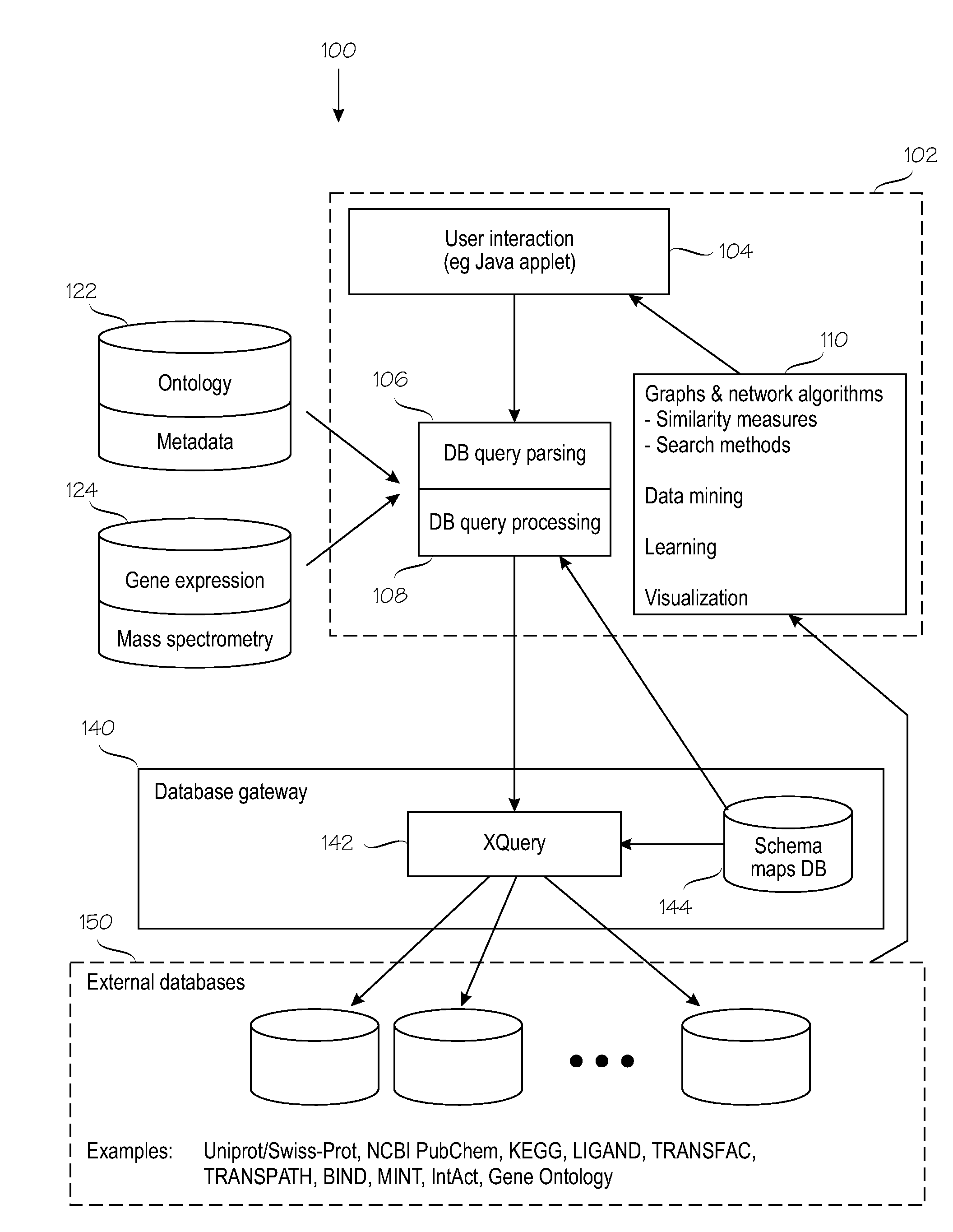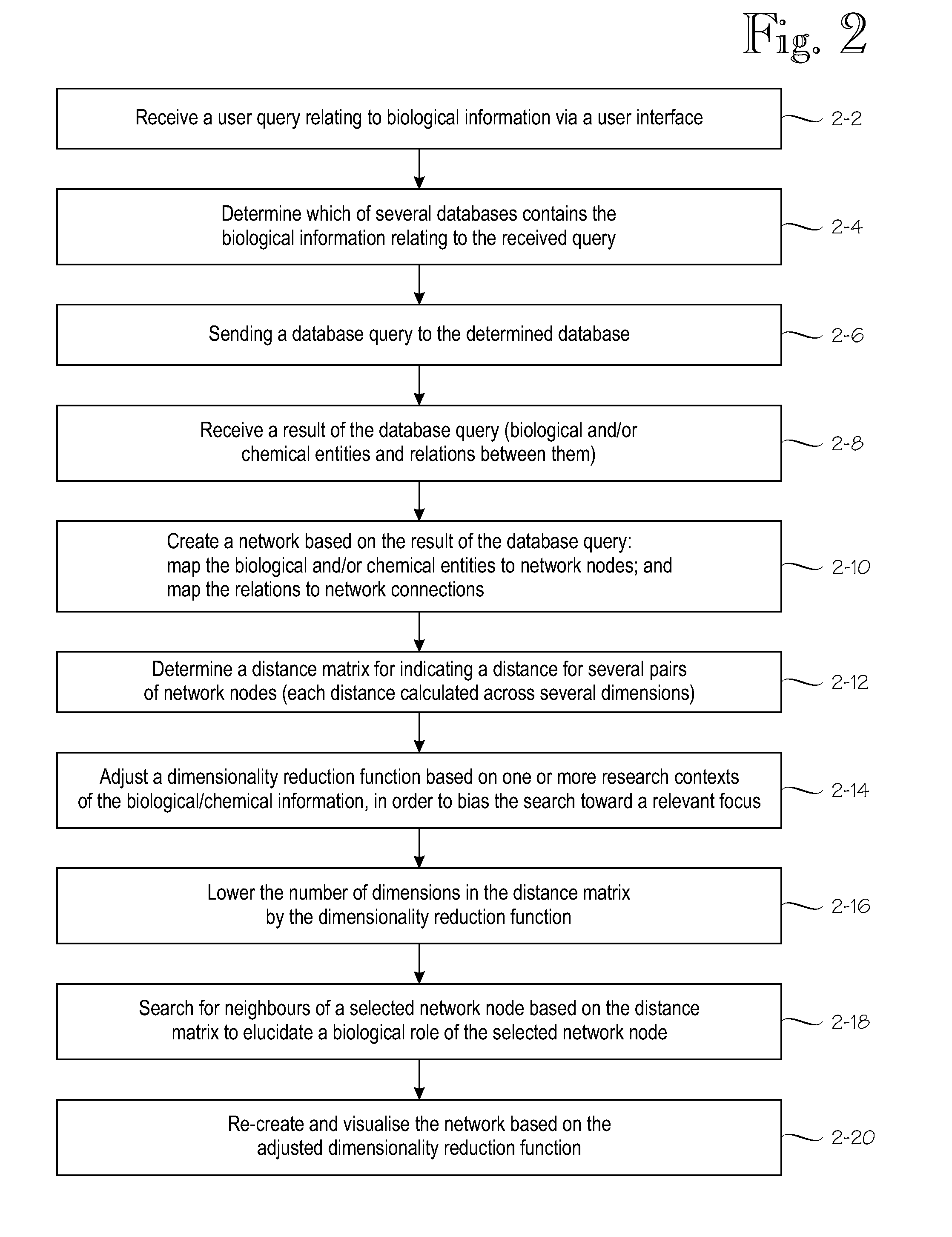Visualization Technique for Biological Information
a biological information and visualization technology, applied in the field of visualizing biological information, can solve problems such as inability to solve problems relating to problems, hammering attempts to integrate biological information, and mutually incompatible naming conventions
- Summary
- Abstract
- Description
- Claims
- Application Information
AI Technical Summary
Benefits of technology
Problems solved by technology
Method used
Image
Examples
examples
[0066]The invention is applicable to the study of metabolic pathways, enriched with information about known molecular interactions at the level of protein-protein interactions, regulatory and signalling networks. FIGS. 7A and 7B illustrate the results of query processing. In FIG. 7A, reference numeral 700 denotes an exemplary query, in which the slash character “ / ” is part of the pathway name (Glycolysis / Gluconeogenesis).
[0067]In this example, the query was set up to first search the KEGG database (shown as external databases 150 in FIG. 1) and retrieve the primary components of the pathways, ie, enzymes and compounds. In a second phase, the database traversals were used to search protein-protein interaction databases BIND and MINT for interactions of the enzymes with the nearest neighbour proteins, ie, interaction search depth was set to one. Reference numeral 720 denotes the resulting network which shows a surprisingly high level of connectivity across different stages of linear m...
PUM
 Login to View More
Login to View More Abstract
Description
Claims
Application Information
 Login to View More
Login to View More - R&D
- Intellectual Property
- Life Sciences
- Materials
- Tech Scout
- Unparalleled Data Quality
- Higher Quality Content
- 60% Fewer Hallucinations
Browse by: Latest US Patents, China's latest patents, Technical Efficacy Thesaurus, Application Domain, Technology Topic, Popular Technical Reports.
© 2025 PatSnap. All rights reserved.Legal|Privacy policy|Modern Slavery Act Transparency Statement|Sitemap|About US| Contact US: help@patsnap.com



